Kira Horie Portfolio
Redefining Japan-ness:
duplication of collective memory
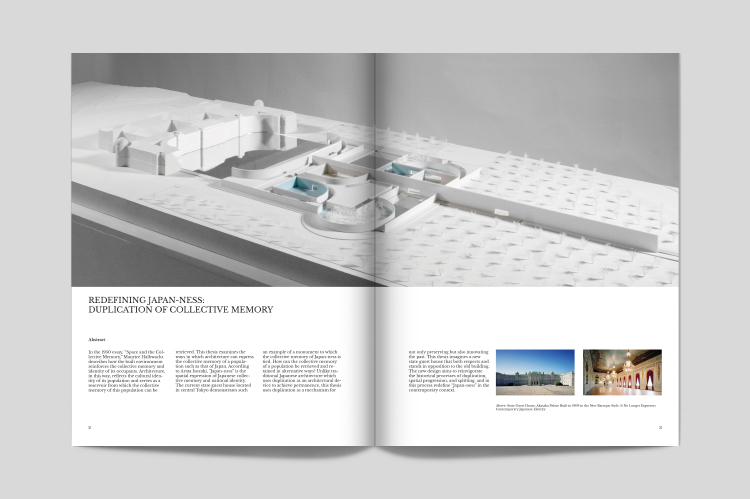
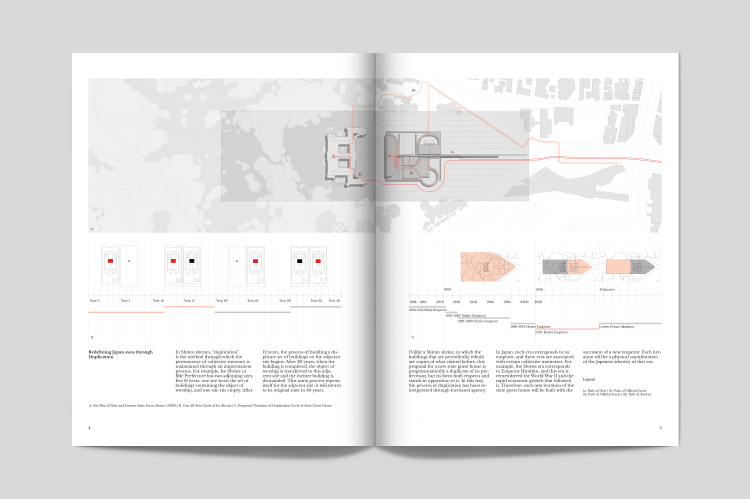
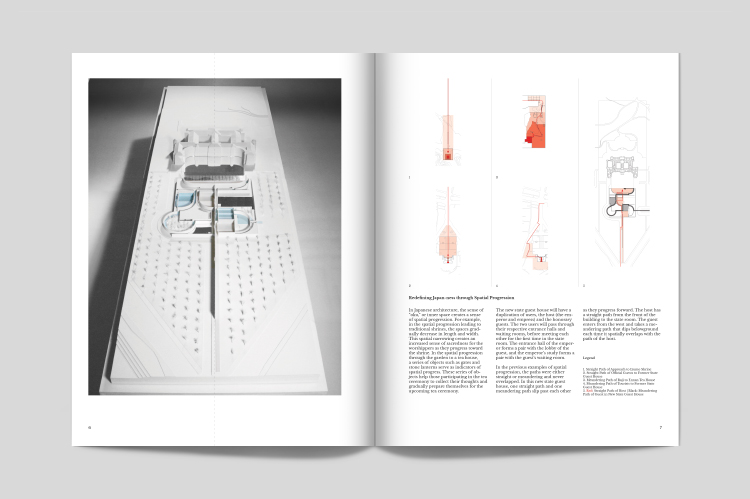
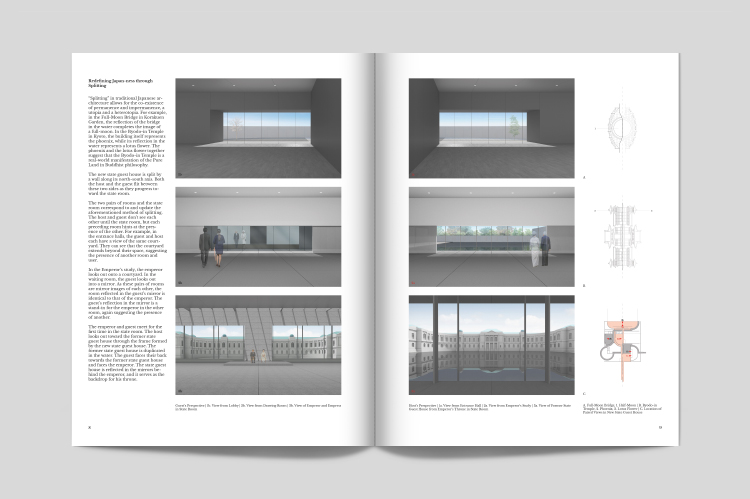
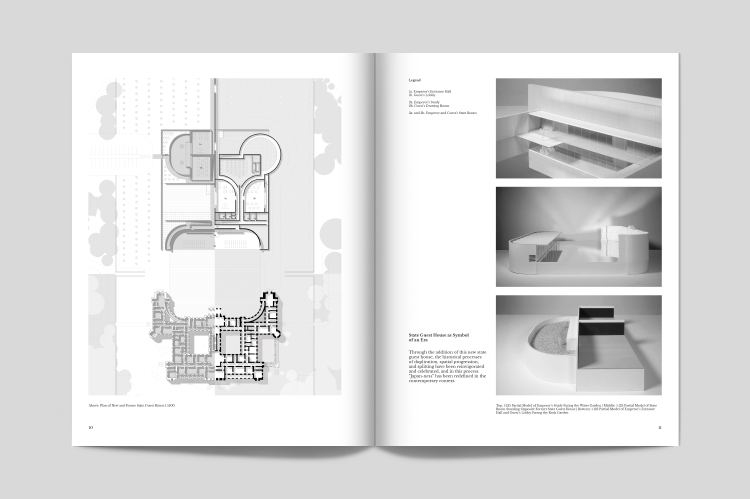
Harvard GSD Independent Design Thesis | Fall 2018
Advisor | Sergio Lopez-Pineiro
Site | Tokyo, Japan
Abstract
In the 1950 essay, “Space and the Collective Memory,” Maurice Halbwachs describes how the built environment reinforces the collective memory and identity of its occupants. Architecture, in this way, reflects the cultural identity of its population and serves as a reservoir from which the collective memory of this population can be retrieved. This thesis examines the ways in which architecture can express the collective memory of a population such as that of Japan. According to Arata Isozaki, “Japan-ness” is the spatial expression of Japanese collective memory and national identity. The current state guest house located in central Tokyo demonstrates such an example of a monument to which the collective memory of Japan-ness is tied. How can the collective memory of a population be retrieved and retained in alternative ways? Unlike traditional Japanese architecture which uses duplication as an architectural device to achieve permanence, this thesis uses duplication as a mechanism for not only preserving but also innovating the past. This thesis imagines a new state guest house that both respects and stands in opposition to the old building. The new design aims to reinvigorate the historical processes of duplication, spatial progression, and splitting, and in this process redefine “Japan-ness” in the contemporary context.